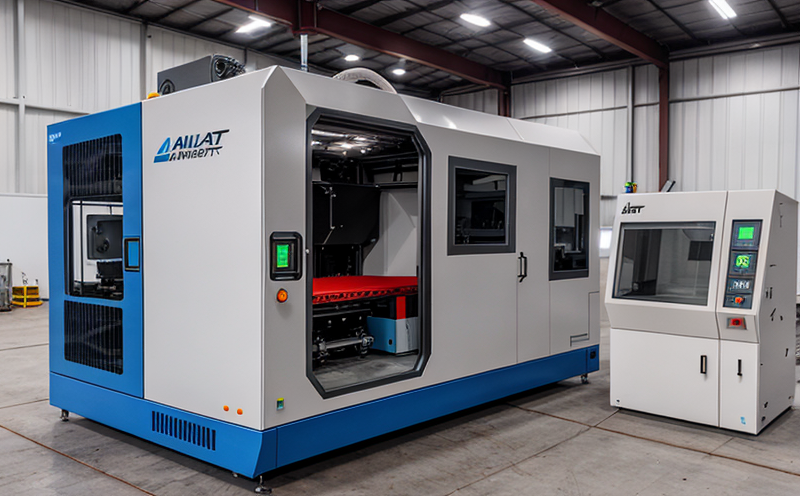ASTM F3456 Design Standard Testing in AM Processes
The ASTM F3456 standard provides a design guide for additive manufacturing (AM) processes, ensuring that parts meet the intended mechanical properties and design requirements. This service focuses on testing components manufactured using AM technologies to ensure they comply with the specified design criteria as outlined in this standard.
Additive manufacturing is a rapidly evolving field that offers significant advantages over traditional subtractive manufacturing techniques. However, the unique nature of AM processes presents challenges related to part consistency and quality assurance. ASTM F3456 addresses these challenges by providing comprehensive testing procedures tailored specifically for AM parts.
The standard covers various aspects including but not limited to layer thickness control, support structure design, post-processing steps, and final dimensional accuracy. By adhering to this standard, manufacturers can produce high-quality parts that meet both performance expectations and regulatory requirements.
Our laboratory offers ASTM F3456 Design Standard Testing for AM processes utilizing state-of-the-art equipment capable of precise measurements down to micron levels. Our team of experts ensures accurate interpretation of results against specified criteria ensuring compliance with the latest industry standards.
This service is essential for any organization involved in designing or manufacturing parts via AM technologies who wish to guarantee that their products meet stringent quality benchmarks. Whether you're an R&D engineer looking to validate new designs, a quality manager seeking assurance regarding current production processes, or a compliance officer ensuring regulatory adherence - our ASTM F3456 Design Standard Testing service can provide peace of mind knowing your parts are up to industry standards.
- Layer Thickness Control: Ensuring consistent layer thickness is crucial for achieving desired mechanical properties. Our testing ensures that layers meet specified tolerances, preventing issues such as warping or cracking during the build process.
- Support Structure Design: Properly designed support structures are vital to prevent distortion and ensure part integrity throughout the manufacturing process. We evaluate support structures for strength, stability, and ease of removal after printing.
- Post-Processing Steps: Many AM parts require post-processing treatments such as heat treatment or coating application to enhance their mechanical properties further. Our tests verify that these processes have been correctly implemented without introducing defects into the part.
- Final Dimensional Accuracy: Precision is key in many manufacturing applications, especially where tight tolerances are required. We measure dimensions accurately down to microns using advanced metrology equipment to confirm that parts match their intended specifications.
Scope and Methodology
The ASTM F3456 Design Standard Testing encompasses a range of methods aimed at evaluating the suitability of parts produced using AM technologies. These tests are designed to assess various critical aspects of part quality, including mechanical properties, dimensional accuracy, surface finish, and residual stress levels.
Our laboratory utilizes cutting-edge testing equipment such as coordinate measuring machines (CMMs), scanning electron microscopes (SEM), and hardness testers to perform these assessments. Each test is conducted according to the exacting specifications laid out in ASTM F3456, ensuring that results are reliable and reproducible.
During the testing process, we follow a structured methodology consisting of several key steps:
- Specimen Preparation: Before any tests can be conducted, specimens must be prepared according to ASTM F3456 guidelines. This involves selecting appropriate sample sizes and orientations that accurately represent the part's design.
- In-Process Monitoring: For some parts, in-process monitoring may also be required using techniques such as X-ray computed tomography (CT) scanning or thermocouples embedded within the material itself to track changes during the build process.
- Post-Processing Evaluation: After completing the AM process and any subsequent post-processing steps, additional evaluations are carried out to ensure that all modifications have been successfully applied without introducing defects.
Industry Applications
The ASTM F3456 Design Standard Testing in AM processes finds application across multiple industries where precision and reliability are paramount. From aerospace to automotive, medical device manufacturing, and beyond, organizations involved in these sectors rely on our expertise to ensure that their parts meet the highest standards of quality.
In the aerospace industry, for instance, lightweight yet robust components are essential for reducing fuel consumption while maintaining structural integrity. By ensuring compliance with ASTM F3456 guidelines during design and manufacturing stages, companies can be confident that their parts will perform reliably under extreme conditions.
Automotive manufacturers similarly benefit from this service by being able to produce custom parts tailored specifically to meet the demands of advanced vehicle designs. Medical device producers also turn to us for ASTM F3456 Design Standard Testing because it guarantees that implants and prosthetics are fabricated accurately, ensuring patient safety above all else.
Our comprehensive testing services help these industries maintain their competitive edge by delivering parts that not only meet but exceed expectations in terms of performance and longevity. Whether you're developing innovative new products or simply looking to improve your existing processes, our ASTM F3456 Design Standard Testing service offers the assurance needed for success.
Quality and Reliability Assurance
- Compliance Verification: Ensuring that parts comply with all relevant ASTM standards is a cornerstone of our testing process. This includes verifying not only mechanical properties but also dimensional accuracy, surface finish, and other critical parameters.
- Data Analysis: Advanced data analysis techniques are employed to interpret test results accurately. This allows us to identify trends and potential areas for improvement within your manufacturing processes.
- Continuous Improvement: Based on our findings, recommendations are provided to help improve future iterations of parts based on ASTM F3456 criteria. Continuous improvement is crucial in maintaining high standards across all phases of product development.





